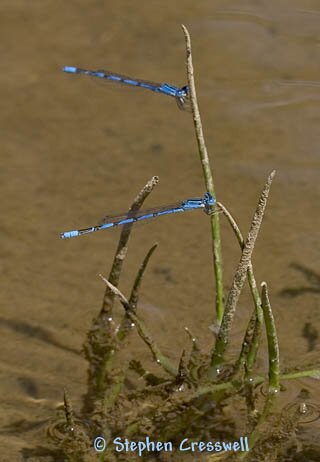

Family: Coenagrionidae
Length: 21-28 mm
This species takes its common name from the peculiar black shoulder stripe, which is divided in two by a thin blue stripe. This is the key identification characteristic; no other damselfly has a shoulder stripe that looks like this one.
Mature males have an abdomen that alternates black and blue. The final segment of the abdomen is blue below and black above, while segments 8 and 9 are all blue.
Females and immatures are tan to olive or brown, but like the mature males they have the divided shoulder stripe.
Double-striped Bluets are most typically found alongside lakes and ponds, but are occasionally found next to slow-moving streams, too.
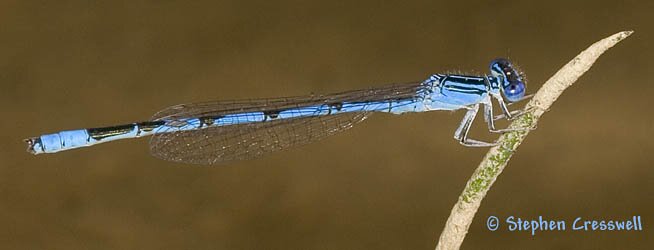 This species was first described from Texas, and lived chiefly in the southwest, but over the last century it has expanded its range with relative rapidity, and now reaches New York, Connecticut, and Ontario. In West Virginia, the species is found in nearly corner of the state, except perhaps the highest mountain areas.
This species was first described from Texas, and lived chiefly in the southwest, but over the last century it has expanded its range with relative rapidity, and now reaches New York, Connecticut, and Ontario. In West Virginia, the species is found in nearly corner of the state, except perhaps the highest mountain areas.
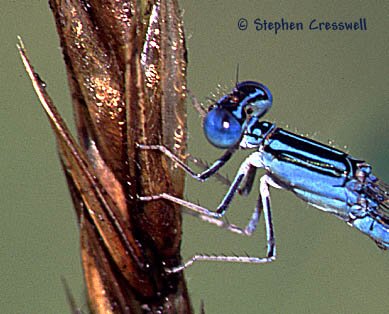
|
|
|
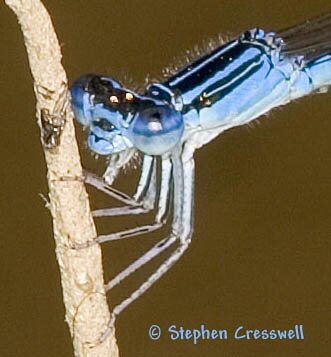
|
|
|
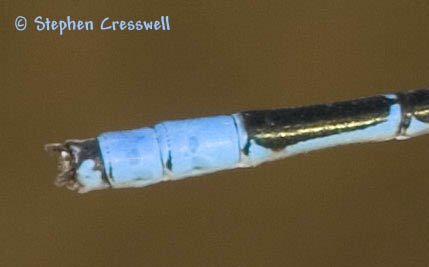
|
| On mature males segments 8 and 9 are blue, while segment 10 is black on top. |
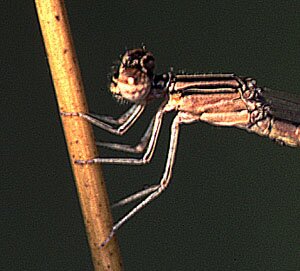 |
|
|


